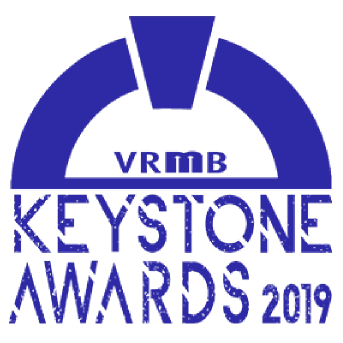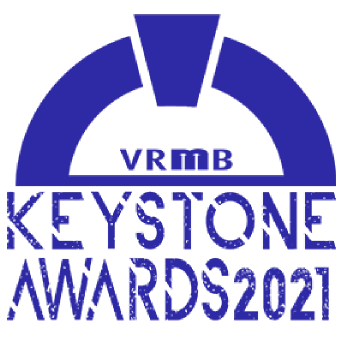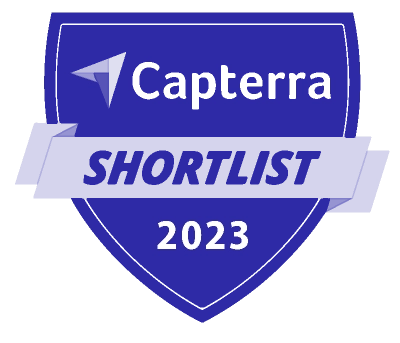The trend for tiny house vacation rentals shows no sign of slowing—yet. According to Airbnb, demand for tiny cabin rentals rose by 85% from 2019 to 2020. From a sustainability and carbon footprint point of view, tiny houses make complete sense. Plus, nowadays, travelers prefer to stay in unique places on vacation, from off-grid glamping to treehouses and igloos; they want to experience a getaway that is out of the ordinary. So, given the trend, if you’re looking at investing in a tiny home rental, let’s first take a look at the pros and cons. We can also then decide if this is either an over-hyped fad for the Instagram generation or a realistic longer-term income stream for the vacation rental business.
What is a tiny home rental?
A tiny home rental is the renting of extremely small houses built on a cement foundation or a trailer, generally 300 to 600 square feet. Tiny homes only come with the essentials needed to live comfortably, like a living area, kitchen, bathroom, and some storage areas. Tiny houses also often have beautiful and minimally decorated interiors.
Modern vacationers look for environmental sustainability as part of an overall trend. As per National Geographic, renters are increasingly interested in staying closer to home in eco-hotels or rentals, and carbon offsetting. Tiny house vacation rentals offer the perfect solution to this demand by:
- Offering properties that use less material in construction.
- Being energy efficient if built well, with smaller spaces to heat or cool.
- Using renewable materials in construction, like wooden buildings.
Are tiny home rentals profitable?
If you’re wondering if investing in a tiny house would be profitable for you, consider this: the National Association of Home Builders has determined that 53% of Americans would consider living in one. Eighty-six percent would be willing to buy a tiny house as their first home because they’re more affordable, efficient, eco-friendly, and they don’t have to overspend on living expenses. So before you close the book on this opportunity, here are some other things to consider.
- Tiny houses are not only in demand, they are much easier to manage as a property owner.
- There’s not as much space to manage, so it’s less overwhelming.
- The rooms are easy to maintain.
- It’s much quicker to clean up behind renters.
- You don’t need to spend a lot on amenities.
- You can add on here and there if you have to.
- With the money you save on indoor amenities, you can splurge a little more on the exterior living space by adding amenities, like a patio, on-site fire pit for s’mores, a hot tub, etc.
- They’re becoming a travel trend, and you can capitalize on this trend by making your space look “Instagrammy” – cozy corners, flowers, a hammock and swing in the garden.
A great first step for vacation rental owners
If you’re a first-time renter, starting with a tiny home could save you tons of money and then make you even more to further invest in your business. If your vacation rentals include tiny houses, you would be taking full advantage of a market that is totally in demand right now.
Tiny houses are a low-risk income-generating source because of how affordable they are to own, but you still have to put in the time to make them profitable. Here are some considerations when renting your small space:
- Place your tiny house in close proximity to some of the highly requested vacation spots and pitch that when you advertise it. Think along the lines of hiking trails in a national park, kayaking on a lake, etc.
- Keep the tiny house clean.
- Make sure it has an appealing decor.
- Provide great customer service and comforts of home.
You should never underestimate the time commitment of a tiny home. While it may not take a lot to maintain it, you still have to invest the time to ensure it’s profitable. As with any vacation rental you rent, people should come off of your tiny home experience feeling that it was the best thing in the world, so they’ll want to come back again. So go all out and spare no expenses with promoting your tiny home.
The other thing you want to do is invest wisely. If you’re considering purchasing a tiny house to rent, consider the cost that will go into purchasing it. While it’s much more affordable than the average single-family home, there is still a cost associated with it. If you’re taking out a loan and will be paying a mortgage, or if you paid only a small percentage on the home, you may not reap immediate profit. So, be realistic about your goals, how much loss you can take, and when it’s reasonable to see a profit from your efforts.
Pros & cons of a tiny house vacation rental
Pros
There are many benefits to renting a tiny home as vacation rental property:
- Affordable: Tiny houses are more affordable. You can purchase one for a fraction of the cost of a traditional rental property. Some tiny homes cost as little as $34,000. Lower upfront costs mean smaller down payments and lower mortgage payments.
- You can build your own tiny house as a fun DIY project: Because of the limited space, many people put their time into building their own tiny house. This saves them even more money and it gives them the opportunity to be creative with their building design and interior spaces such as the living room, loft bedroom and kitchenette.
- There are a variety of styles to choose from. There are many ways to acquire the tiny house of your dreams. In addition to the location, consider the type of tiny house you want to build. Some people use houseboats, old school buses, shipping containers, train carriages, etc. for their desired home.
- No HOA or condo fees: How great is that? Don’t we get frustrated sometimes by the HOA rules commanding how to run your home? There’s none of that with a tiny home, so you are free to do whatever you like.
- Environmentally-Friendly: If sustainability is important to you, you should know that tiny homes reduce the ecological footprint by about 45%. Energy bills are much less in a tiny home than in a standard home. You could decrease that even more by installing solar panels. Because of the minimalist space, they help to reduce household waste. Adding recycling containers to your tiny home rental property will increase its carbon footprint even more.
- They’re mobile and more flexible: You can build a tiny house almost anywhere you want, but the best thing is you’re not tied down to a fixed location. Tiny homes are portable. That makes it easier to have a rental property in places where vacation renters request most often.
Cons:
While there are many benefits to owning a tiny house as a vacation rental, there are a few disadvantages as well:
- Less property value: Don’t be surprised if the value of your tiny home gets severely underestimated. This is liable to happen, especially if you do not have a permanent plot of land for your home. The same indicators used to assess the average family home are often seen as much less value when compared to a tiny home. Just know that if your intention is to eventually sell your tiny home, the value may not be up to par.
- No standard fixtures. Although there is not a lot to do to maintain your tiny home, know that maintenance is involved. Not all things that come with a tiny home are standard. For instance, standard plumbing fixtures are not included. So to keep your bathroom fully functioning will take a lot of work on your part, as compost toilets, foot pedal sinks, and water supply may not be part of the package.
- Limited finance options: If your plan is to use your tiny home as a vacation rental, come to the bank with your business plan when it’s time for financing. You’ll soon learn that not all banks see a tiny home as a viable living space. That’s because tiny homes are not limited to brick and mortar. A tiny home can be whatever type of space you wish for it to be. Be prepared for limited financing, but have your plan to share the income potential of your business.
- The possibility of new regulations. Currently, there are many gray areas when it comes to owning a tiny home, so almost anything goes. As the interest in tiny homes is ever increasing, it’s possible that more laws may take effect that could put a plug in how you operate your tiny house vacation rental. Be prepared for changing laws and regulations as they may impact your business.
Other benefits of a tiny house vacation rental property
Owning a tiny house as a vacation rental offers many other benefits:
- Higher ADR: Since they are cheaper to furnish, you can buy high-end or luxury furniture and finishes. You can then increase your nightly rate and increase your profits.
- Lower operating costs: Your cleaning staff has smaller square footage to clean and turnover. On top of that, you don’t have to heat and cool a full-size property. In addition, utility costs will also be lower than the typical vacation home — as low as $10/month.
- Densify and centralize: More tiny houses can be built on the same plot of land. This has tons of benefits. Your cleaning crews don’t have to travel large distances. You can also offer amenities like a communal pool, well-equipped gym, lake or beachfront, etc., that would otherwise be cost-prohibitive.
- Fewer bad guests: Due to their small size, you won’t run the risk of bad guests booking a tiny house to run an unwelcome party, conduct fraudulent or criminal activity, or invite undeclared guests. There’s just not enough space for it!
- Cheaper tech integration: Tiny houses are cheaper to integrate with smart tech. They require fewer devices than larger properties. For example, a single smart thermostat or smart speaker is enough to service the entire property.
- Enticing for privacy: Some renters are looking for one-room places to stay while on vacation. Some are few in number and just want privacy. It’s not always easy to accommodate these demands. Tiny houses give you all of this. This is an opportunity to appeal to couples or solo renters who are not looking for a lot of space.
Should I Start Hosting a Tiny House Airbnb?
Not every guest books a tiny house for environmental reasons. Some might be thinking about building a tiny property for themselves and want a taste of what they’re like. Maybe they’re just keeping up with the latest trends. Others might book a tiny house because they’re all the rage and want to be in on the trend. They want some great Instagram pictures. The point is, there are many reasons why they might be popular now, but it’s important to think beyond the trend and into the longer term.
Investing in a tiny house as a vacation rental property can be a great way to get started in the business at a lesser price. There’s less risk involved, and it’s a great way to learn the business. However, consistent bookings are the key with any vacation rental property.
Tiny houses are cheaper to build than traditional properties, but they’re still going to cost between $30–60,000 each. That’s a substantial investment for any owner, especially a vacation rental business that may be building several of them. To make sure you maximize your return on tiny house vacation rentals, getting the marketing right is essential. Since tiny homes are depreciating assets, it’s important to make sure they’re constantly booked. Should you start this business, you want to guarantee a great customer experience every time by providing a unique value proposition that only your property has.
Tiny house vacation rental marketing 101
For the listing itself, it’s important to focus on explaining not just the environmental benefits of tiny house vacation rentals themselves, but your whole sustainability philosophy. Customers are more likely to buy into it if they believe that you’re doing more than just using green marketing phrases. They want to know that you’ve made a serious commitment to environmental sustainability in your vacation rental business.
One way to do that is to offset your carbon emissions. This not only makes a positive environmental impact, it’s an important marketing vertical and can make a real difference to your bottom line. Coupled with dynamic pricing, you can really boost revenue and decrease vacancies.
As for distribution, it’s essential to list on all the major channels like Airbnb, Vrbo, Booking.com and HomeToGo. The main vacation rental business distribution channels receive millions of site visits per month. So by having a presence on all these sites, you’ll maximize your chances of putting your niche property in front of the right potential guest. In the end it’s a numbers game: the more potential chances you give your properties a chance to book, the higher the likelihood that’ll happen.
But it’s not just about huge numbers—you also have to list your tiny houses on websites frequently visited by eco-tourists such as Yonder or Ecobnb. For that, you’ll need a Channel Manager that integrates into your Property Management Software (PMSs).
Make things easy: integrate a Channel Manager
If you invest in tiny home vacation rentals, paying the extra monthly expense for a Channel Manager will be a good return on investment. That’s because most PMSs allow you to list on the major listing sites and OTAs with millions of monthly visitors, but not the niche ones with fewer but extremely loyal visitors. It’s on these niche sites that you’ll find potential guests most likely to be willing to pay more for a tiny house. Not only that, those smaller sites also have less competition. If you apply the best practices for popping up on the first page of Airbnb, you’ll do well on niche listing sites.
A vacation rental business handling multiple reservations from a wide range of marketing platforms—sounds like a recipe for double bookings and other problems, right? The right Property Management Platform with Channel Manager capabilities is the answer.
In general, by integrating your PMS with a Channel Manager, you’ll get the following results:
- Lower vacancy rates with extra visibility and a bigger potential client pool.
- Bookings from multiple sources come through the same portal.
- Experimentation with different descriptions and marketing strategies across the different channels.
- Average Daily Rate discovery without increasing vacancies.
Tiny house vacation rentals’ market durability
Of course, even if you get the marketing right, utilize a Channel Manager with your PMS, and capitalize on what’s popular right now, you still need to keep a close eye on market trends. Hostfully reports on the latest in vacation rentals in the monthly Future Bookings Report, helping you capitalize on shifting trends. You can also use services like AirDNA, AllTheRooms, and Key Data to get unique insights into your local markets. Tools that Hostfully’s Property Management is integrated with for your benefit.
So if you move into the tiny house vacation rentals area of the market, how do these properties stack up if and when tastes change? What about if something completely unforeseeable, like the COVID-19 pandemic, disrupts the market completely? It depends on the type of property, but as we’ll see below you should always apply real estate best-practices.
The tiny house vs. micro cottage value proposition
If the current popularity of tiny house vacation rentals proves to be a passing fad, it’s the type of property that’s going to determine how you come out of it. A mobile home, for example, will depreciate in value at around 3.5% per year. So a home bought for $50,000 will be worth $41,000 six years later. And good luck selling the tiny house if it was built on a trailer that hasn’t moved in a few years.
On the other hand, a micro cottage built on a real foundation is real estate, not personal property. It’s an asset that can always be resold at market value later, if you decide to change your business model. The right house in the right location may even offer a capital gain, after taking rental income from the property while tiny houses were in demand for vacations. In the end, a micro cottage can be marketed for vacations as a tiny house. So you get the benefits of resale and marketability.
Tiny houses are a niche real estate market, making them a risky investment if profit from their sale is your ultimate goal. Costs per square foot can actually be higher in tiny houses than traditional properties, and insurance for them can be difficult to get. So they may not be an easy sell, for all their charm. Ultimately, part of your due diligence will be to look at the real estate market in your area. If this type of construction isn’t common and likely wouldn’t appeal to buyers, you’re increasing your risk exposure if tiny house vacation rentals end up being a bust.
Tiny house vacation rentals are here to stay
While you’re probably better off not building trailers, there will always be a rental market for tiny houses because of high demand at lower price ranges. So capitalize on the trend, if that’s what it is, knowing that you’ll still retain an attractive asset for sale when it fades.












